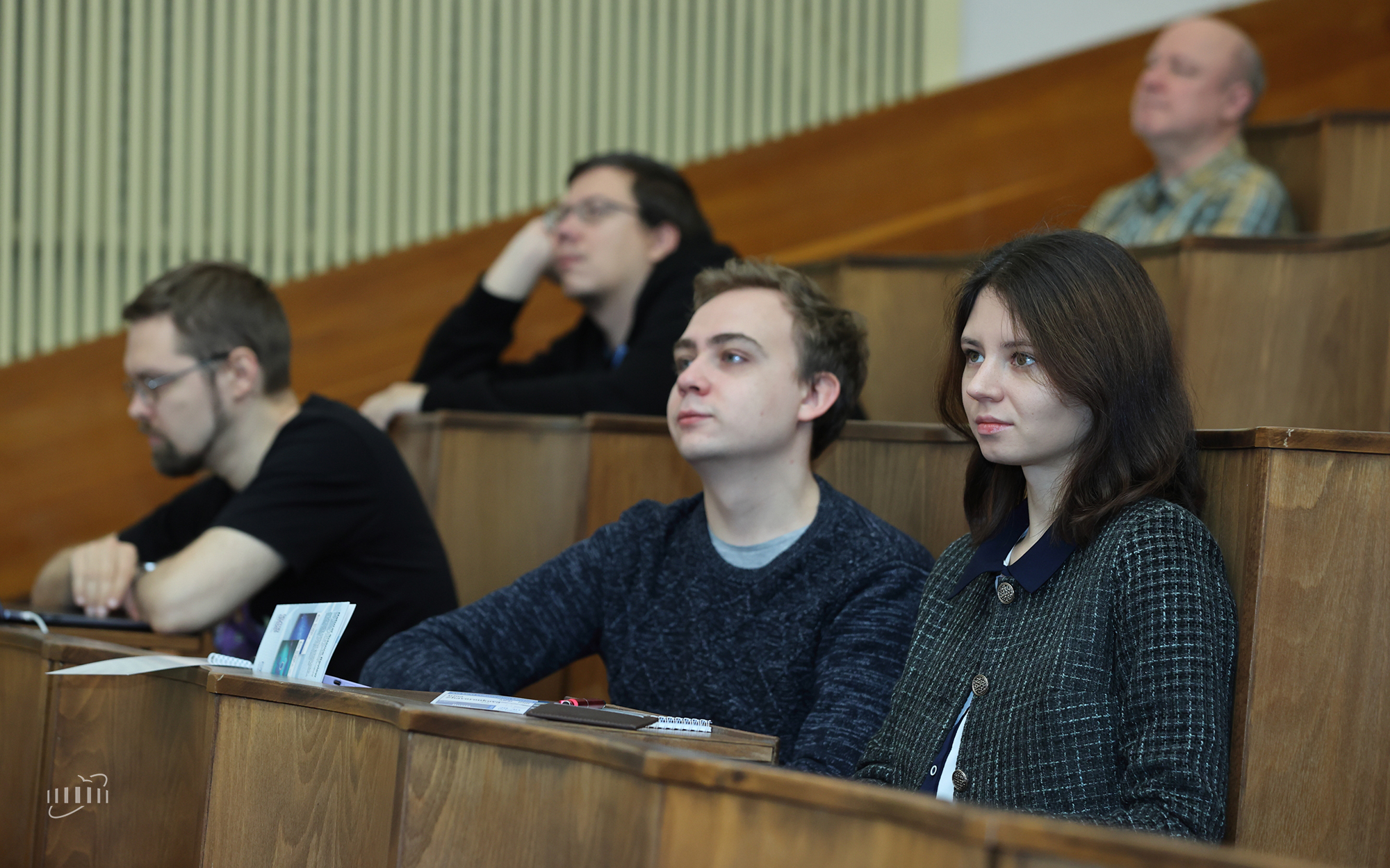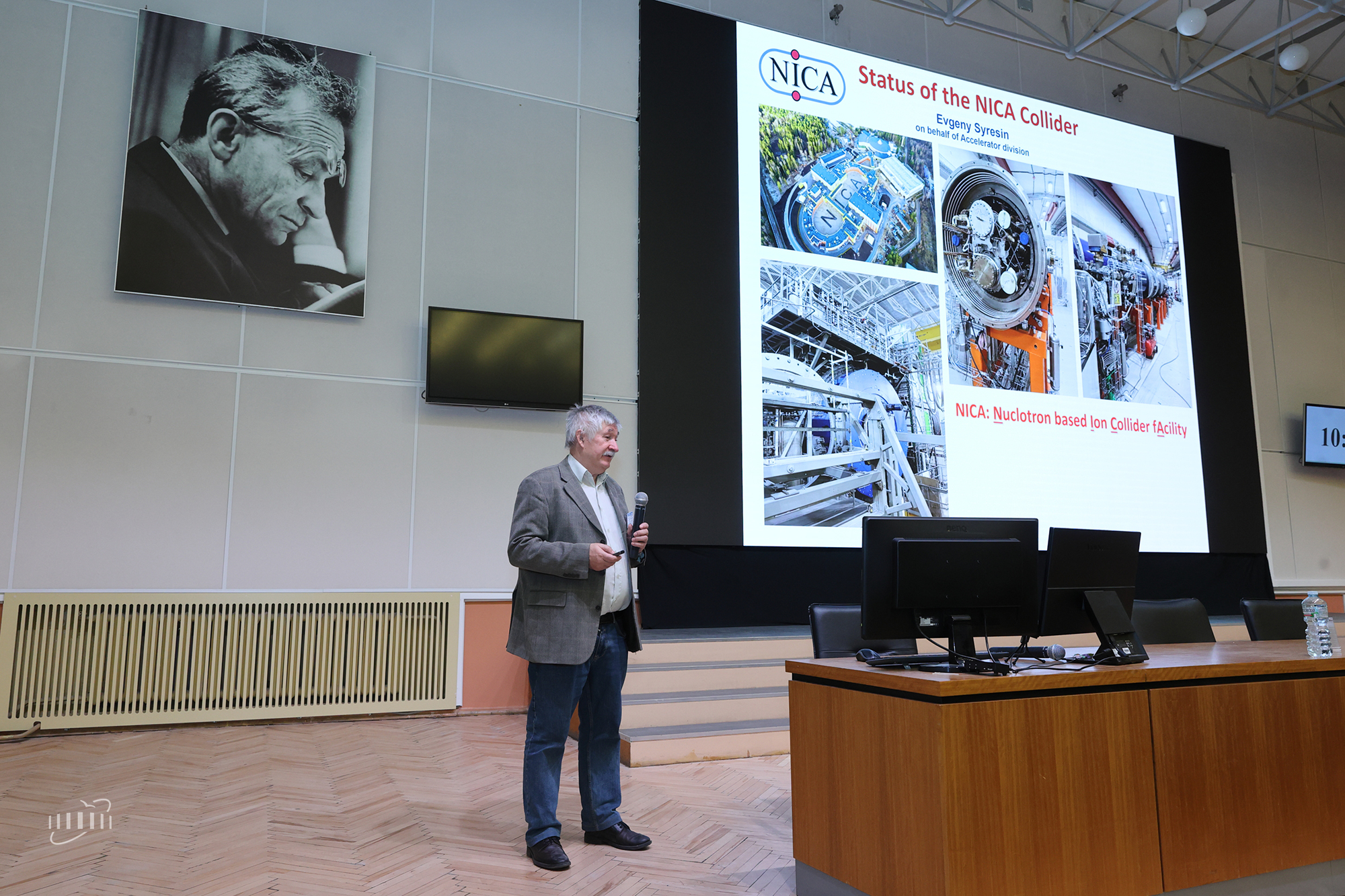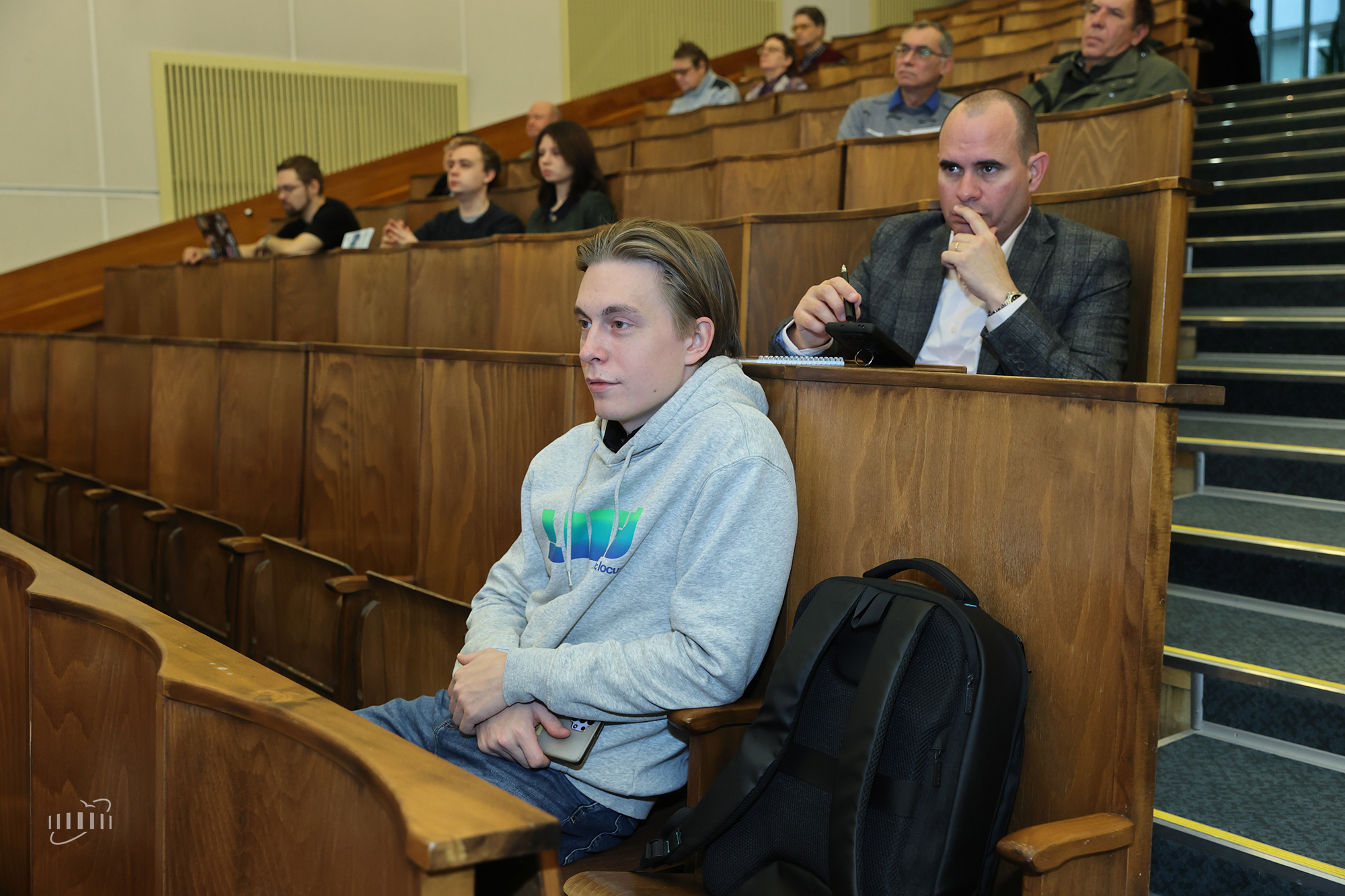MPD Project discussed at VBLHEP
News, 31 October 2025
From 28 to 30 October 2025, the 16th meeting of the MPD (Multi-Purpose Detector) Collaboration took place in a hybrid format at the Veksler and Baldin Laboratory of High Energy Physics. Topping the agenda was the readiness of the Multi-Purpose Detector (MPD) and the NICA Accelerator Complex for launch, as well as plans for new physics studies.
On the first day, MPD Collaboration Spokesperson, VBLHEP JINR Chief Researcher Victor Riabov gave a welcome speech. He highlighted the eight-year history of the collaboration and emphasised the contribution of each participant to developing the large-scale international project.
Chief Engineer of the VBLHEP accelerator complex Evgeny Syresin gave a talk on the progress of the NICA Collider. He provided details on the completion of the key stages of modernisation of the complex and preparation for a physics run with colliding beams.
In 2025, one of the two sections of the Lambertson superconducting magnet and the pulsed magnetic kicker for the fast extraction system from the Booster to the Nuclotron was installed. Active work continues on the assembly of the beam transfer channel from the Nuclotron to the Collider. The north and south branches of the line will be gradually commissioned in November–December 2025. One of the latest important achievements was the successful testing of the compressor station and cryogenic infrastructure of the complex, which ensured the simultaneous operation of three accelerators: the Booster, the Nuclotron, and the Collider.
In addition, specialists installed eight cavities of the RF2 high-frequency accelerating system and two RF1 stations designed for beam accumulation and short bunch formation in the Collider. Two new RF3 stations, developed and tested by the Budker Institute of Nuclear Physics, will be installed in 2026. As Evgeny Syresin noted, cryogenic testing and cooling of the eastern half-ring of the Collider will begin in November, in parallel with those of the western one.
From October to November 2025, the Booster and the Nuclotron will operate simultaneously in test mode. During this time, specialists will test fast beam extraction, configure the beam transfer channel from the Nuclotron to the Collider and slow extraction channels for the BM@N Experiment and the ARIADNA Project. The injection of xenon ions into the Collider is scheduled for December 2025, and the first experiments with colliding beams are set to be conducted in early 2026. Collisions of single bunches will take place in January, and a run with 22 bunches will start in February. In spring 2026, after the shutdown of the Collider, new work will begin to put the reactor into operation at its design capacity.
Victor Riabov provided an update on the MPD Collaboration, currently consisting of more than 500 specialists from 12 countries, including the Joint Institute for Nuclear Research.
He spoke about the significant progress in the work on the MPD magnet. Improvements of the thermal insulation and components of the chimney’s internal structure finished. During the cooling of the collider in the autumn, the stable operation of the magnet with a field of up to 0.3 T was confirmed. The next step is magnetic field measurements at 0.2 and 0.3 T. It is planned to achieve 0.5 T in the first months of 2026.
Victor Riabov noted that due to delays in the cooling of the superconducting magnet and the assembly of the time projection chamber, the launch of the Multi-Purpose Detector will take place later than previously scheduled – in 2026. However, in the near future, the detector subsystems required for registering the first collisions at the NICA Collider will be installed at MPD’s crossing point. A high intensity of events is expected in the fixed-target mode (MPD-FXT), while in the colliding beam mode (MPD-CLD), with luminosity initially low, there will be significantly fewer events. Therefore, specialists will use electromagnetic radiation from ultra-peripheral collisions for more effective detection. Thus, the sensitivity of the detectors used can increase by two orders of magnitude.
In 2025, the collaboration’s publishing activity continued to grow: the total number of scientific papers in peer-reviewed journals exceeded 250. The second major article entitled “MPD physics performance studies in Bi+Bi collisions atsNN = 9.2 GeV” by the collaboration participants was published in Revista Mexicana de Física (Rev. Mex. Fis.). In addition, Victor Riabov announced the start of work on the next article, which will be devoted to physics studies in collisions of beams with a fixed target at the MPD. In conclusion, his talk presented the latest results of modelling physics processes for various signals studied in the MPD-FXT mode.
Head of the MPD Scientific and Experimental Department, Collaboration’s Technical Coordinator Vyacheslav Golovatyuk spoke about the progress of the creation and integration of key structural elements of the Multi-Purpose Detector. DLNP JINR Deputy Chief Engineer Konstantin Mukhin provided an update on preparations for the launch of the MPD superconducting solenoid. A VBLHEP Sector Head Oleg Rogachevsky and a leading researcher at the Laboratory of Information Technologies at JINR Slavomir Hnatic made a presentation on software development. During an MPD Institutional Board meeting in the afternoon, Victor Riabov was re-elected as Collaboration’s Spokesperson until 31 December 2028.
In total, more than 30 presentations were delivered. Collaboration participants discussed current research areas in heavy ion physics. The second day’s programme focused on computing and software issues, and the final session on 30 October was devoted to physics research at the experimental facility. More than 180 scientists from Belarus, Bulgaria, China, Cuba, Egypt, Kazakhstan, Mexico, Russia, Serbia, and Uzbekistan took part in the 16th MPD Collaboration Meeting.









